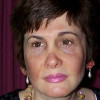Residential Rehabilitation

The courage of former first lady Betty Ford in admitting addiction
When, during the late 1970s, Former first lady Betty Ford made public her long-term dependence upon prescription drugs and alcohol, she freed countless addicts to bypass their hidden shame and accept their need to escape the strength of substance abuse. Akin to other frowned-upon behaviors such as gambling and promiscuity, women have always been held to a higher standard than have their male counterparts. Hence, Betty Ford’s declaration released women, to a large degree, from the shackles of moral and social taboos.
Betty Ford’s candor regarding her early sense of entitlement
When she entered rehabilitation in 1978, Ms. Ford expected, as former first lady, to be given a private room. To her dismay, her doctor placed her in a room with three other women. When she protested, he said, with a sigh, her insistence would force him to inform those three ladies they would need to pack up their things and move out, as this former first lady did not wish to share living space with them. Aghast, Betty Ford begged him not to voice anything so hurtful on her account.
Later, her doctor told her this had been the response he had hoped to receive. In a sense, it ignited her recovery, in that it forced her to see the injustice of her inner sense of entitlement and superiority. The challenge of sharing a room with three strangers compelled her to understand addiction as an equalizing force for those who become gripped by its harness and tied to its leash.
The song "Bye, Bye, Blackbird" was first published in 1926 by composer Ray Henderson and lyricist Mort Dixon.
Opening verse:
Pack up all my cares and woe,
Here I go, singing low,
Bye bye blackbird
Lasting results of her rehabilitation
In October 1982, Betty Ford co-founded the Betty Ford Center for addiction treatment with two other professionals Leonard Firestone and Dr. James West. Primarily the Center accepted women patients who were encouraged to avail themselves of its help by delving into those darkest crevices of their lives, often acknowledged only in nightmares. As Betty Ford and her colleagues had experienced various types of residential rehabilitation treatment, they culled and pooled what they viewed as the finest boosts to recovery into their ideal of a successful wellspring.
One especially noteworthy aspect has been to urge residents to do all they can to compensate anyone whom they have ill-treated due to their substance abuse. Then, having written these down on paper, the recovering addicts fling their written regrets onto a bonfire, while singing the song “Bye-bye, Blackbird”
Barnaby Conrad was born March 27 1922 died February 12 2013. He was a renowned author, also famed for becoming a bull fighter his heavy drinking and celebrity status
When residential rehabilitation proves the only successful method
For many, this type of treatment succeeds by the depth of its emotional excavation. Initially, memoirist Barnaby Conrad believed aversion therapy would free him from his dependence on alcohol. This type of clinical care is intended to force a patient to associate a given behavior with a distasteful experience or sensation. Hence, someone who wishes to end his tendency to gamble might be shown pictures of someone playing blackjack at a casino, followed by an image of thugs terrorizing the man's wife and children.
Hence, Barnaby Conrad entered into a hospital program where a well-stocked bar, staffed by a nurse, provided him with however many drinks he desired. As his inebriation increased, the nurse would say, “Go ahead, drink your poison.” Once finished, he would be given a “butterfly” (A beverage which conceals a potion to induce frequent vomiting) to worsen the nausea which already begun to engulf him. This combination had the wretched results for which they were intended.

Why then did this therapy fail?
Continued over a series of days, by its end, Conrad felt repelled by even the hint of wine on the breath of anyone he might encounter within any framework. Still, in time, as his hospital memories faded, Conrad began to think he could, with safety, enjoy the occasional drink. Then, as might have been expected, these drinks became so repeated that he often woke in the morning wondering where he had left his car during the previous evening.
Barnaby Conrad entered the Betty Ford Center
At first, Conrad detested the regimentation forced upon him by Center’s rules which struck him as pointless and juvenile. Phone calls were only permitted after a specified time. All the literature in the library consisted of information regarding the hazards incurred by substance abuse. At one point, Conrad determined that his first act after he had completed his time at the center would be to head for the nearest bar and order a hefty, powerful drink.
Still, as he began to release his defenses, drop his intellectual stance, and accept the infinite ways in which his alcoholism had taken control, he began to detest and despise his dependence upon it. As the end of his stay in the center drew near, he found there was nothing in his life he had hoped to obtain as much as the metal disc which indicated his having completed the program and reached his sought-after goal of sobriety.
Katharine Dickson Dukakis was born December 26 1936 and is the wife of Michael Dukakis who was a presidential candidate of USA in 1998.
“Because I can't help it” The Kitty Dukakis’ ordeal
Unlike Betty Ford, Kitty Dukakis', addiction was exposed by the press, despite her desperate wish to conceal its results. Much of this publicity stemmed from the source of her crisis. During emergency hospitalization for chemical ingestion, she refused to reveal to doctors that, deprived of pills and prevented by her family from obtaining alcohol, she had resorted to various substances, including nail polish remover. Only when forced to understand continued silence would bring about her death could she be persuaded to voice this wrenching confession.
The transition from tablets to alcohol
In the past, having gone through residential care for her addiction to pills of various kinds, she was told she could still enjoy the occasional drink containing alcohol, but she would need to be cautious. Sadly, she dealt with her same inner turmoil by transferring her quest for peace to excessive drinking. Once aware of this, her husband and children were on constant guard of the liquor cabinet.
Despite this vigilance, at one point, ignoring her son’s distress, she strode to that cabinet and took out a full bottle of vodka. When the young man pleaded with her to tell him why she had done so, she could only reply, “Because I can’t help it.” In truth, her statement expressed the first step in any 12-step regimen: acceptance of powerlessness to control the abuse of whatever substance or behavior has come to hold them in bondage.
Outward Bound
Is a program in which participants are provided with basic food, water, matches, and other survival tools meant to prove their success at inventiveness. Each participant is asked to keep a journal of thoughts and reactions. Naturally, there is a monitoring system in place to rescue anyone who finds the experience overwhelming.
Recovery consequent to a stay in a clinic
Some teenaged addicts have found their ability to succeed in such challenges as "Outward Bound" has spurred them to return to day-to-day life with the sense that, if able to survive in the wilderness for several days with minimal resources, they could overcome their addictions. Kitty Dukakis tried this type of strenuous, exhausting test, involving sports such as mountain climbing for middle-aged women. As with the younger set, she found her ability to succeed liberated her from her need for alcohol-but only for a while. Once the exuberance of this experience faded, the driving pain and emptiness overwhelmed her will power. It was only via residential treatment and continuous attendance at meetings of Alcoholics Anonymous and Narcotics Anonymous that she regained a renewed sense of contentment and restored equilibrium.
Former Rolling Stone pop-group guitarist Keith Richards said regarding the results of chemical dependence: “Hey, there's one simple way of not being in that position: don't take the drug. But there are probably a million different reasons you do.
— Keith Richards
An unexpected cleansing through clinical demands
Bestselling memoirist Augusten Burroughs found this type of treatment to be the complete opposite of what he had envisioned. Having prepared himself for a hippie, flower child setting where soft-spoken nurses in hand-woven dresses would offer him desserts made from berries, he found residential care to be 28 days from hell which kept him from dying. Burroughs emerged from the clinic equipped with a psychological set of tools to help him overcome life’s vicissitudes and avoid its unending temptations. Despite the agony of their purging, Burroughs writes with profound gratitude towards those who denuded him of his pretexts and self-deceptions, and then armored him to defeat them.

Consequences of the Billie Piper sleep diet
Finding difficulties in shedding weight, actress Billie Piper believed she had found an ideal panacea. As she felt no hunger pangs while asleep, why not induce a brief hibernation via tranquilizers.
Having swallowed a number of tablets, she did indeed sink into profound slumber. When she awoke, however, she realized things had gone badly awry.
Her body’s survival instinct had forced her to eat the inside of one of her cheeks.

Compelled to attempt abstinence
This horror forced Billie Piper to see the dependence she had developed upon such medications. Thus, she grudgingly signed herself into a residential center. Sullen at first, she sat chain- smoking in silence. Fortunately, neither staff nor fellow residents tried to badger her to interact. Instead, they treated her in such a friendly and welcoming way that she soon found herself sharing smiles and chats. Within a short while she began participating in group activities and therapy. In her memoir, she speaks of the joy she feels in having triumphed over what had grown close to becoming a deadly addiction.

Alternatives to residential treatment centers
As we have seen, there are those who almost certainly would have died without the controls placed upon them by residential safeguards. The most obvious of its benefits is the removal of a resident from environments where whatever substance/s they have abused become unobtainable. Conversely, this enforced withdrawal may not continue when an abuser leaves the safety of this protective setting. Current thinking is that the least controlling conditions are optimal for full and lasting recovery. Thus, residential care should be deployed only when there is no other option.

The hierarchical hazard of in-patient treatment
As Carrie Fisher writes in her autobiographical novel, “Post-cards from the Edge”, those in treatment centers who have not taken drugs for a week or two longer than recent entrants tend to feel a sense of elitism. The fact of their abstention stemming from the inability to access their substance‘s loses relevance. Instead, this strand of superiority is pounced upon and savored. In addition, cruelties, both profound and trivial, can become components of the most ostensibly caring facilities.
James Christopher Frey was born September 12 1969 and is a famous writer and media producer
Is life endangering levels of pain fruitful or punitive?
At age 23, James Frey was brought to a residential center when no other effort had met with success. Before accepting a resident, this clinic insisted upon attention to immediate physical needs. As Frey required extensive dental care, he was sent to a dentist who had agreed to adhere to the rules set forth by this facility. His compliance meant that even the most basic pain relief, such as numbing the gums around the areas where teeth were decayed was denied. The endlessness of Frey’s agony impelled this dentist to ask, several times, if he wished to return at a later time. Frey said he would prefer to continue, knowing postponement would only lead to a further such session. Later, the dentist told Frey of his fear the depth of his pain might have led to a heart attack. Frey’s account brings into question the motivations underlying this level of enforced agony.
Beliefs underlying humiliation
It has become understood that those who engage in anti-social behaviors, such as substance abuse, often need to be broken down before they can be built up again-in a sense reshaped into the people they wish to become. This may prove true if a substance abuser has developed a drawbridge of defenses and fortresses of blaming strategies. Such pretexts need to be shattered, freeing the genuine reasons to be explored and accepted as a first step towards progress.
Menace lurks in the power this method gives members of staff to justify an unconscious urge to bully. A characteristic of many addicts is held to be grandiosity, with its accompanying expectation of constant catering by those around them. When symptoms of this trait are perceived, staff in some centers compel a paper crown to be donned, in order to denote the wearer as “King Baby”. (The term “king” seems to encompass both genders, perhaps due to the instant idea of power conveyed by the word.) While bound to cause some degree of chagrin, this rebuke is fairly innocuous. Further assaults on this Narcissism or reprimands for infractions of rules may include scrubbing a bathroom floor with a toothbrush, cutting a lawn with nail scissors, or sleeping on a bare floor.

Greater degrees of degradation
Lauren Chapin, one of the children on the long-running 1950s sitcom "Father Knows Best", endured a childhood far harsher than the nurturing one portrayed in her TV role. Eventually, she succumbed to drug addiction. While in this type of center, late at night, she and her fellow residents were summoned to what was called an emergency meeting.
While they were there, staff took the few personal items each resident was allowed to keep and jumbled them into one haphazard pile. Therefore, when the exhausted residents returned, they had no choice but to sort through this heap, in order to reclaim those items they owned. Given their physical confinement and psychological scourging, do these residents not deserve some degree of dignity?
The financial aspect of in-patient care
Often in the U.S., insurance company doctors determine the length of treatment required by each individual. While this can affect some types of out-patient care, state coverage can nearly always be found for the ill and impoverished. Sadly, within residential clinics, “the insurance cure” has become a cynical but realistic term regarding the coincidence of sudden recovery with the draining of the insurance wellspring. Arguably, a facility which has taken on a patient has an ethical obligation not to send him away before he has reached some level of readiness. Indeed, some clinics allow those who truly cannot pay for continued support to remain post-insurance.
Please enter the poll
Do you believe residential care is the optimal solution to addiction?
A lack of standardization
In nearly every state in America, almost anyone is free to set up a residential center. Once ensconced in such a setting, its director can decree what remedies will be deployed. These may include any number of holistic cures: yoga, vitamin therapy, and other holistic therapies which, although harmless, do not lead towards recovery. Hence, charisma rather than true ability may succeed in drawing followers whose addictive tendencies enslave them to this seeming guru. Roots of cults can all too easily form from the soil of this framework.
In summary, we have reason to hope enhanced understanding of brain chemistry combined with a deepened awareness of the causes of chemical dependency will eradicate some past beliefs which have resulted in errors. In time, treatments may be available which can address causes and struggles on a more individual basis.
© 2014 Colleen Swan








